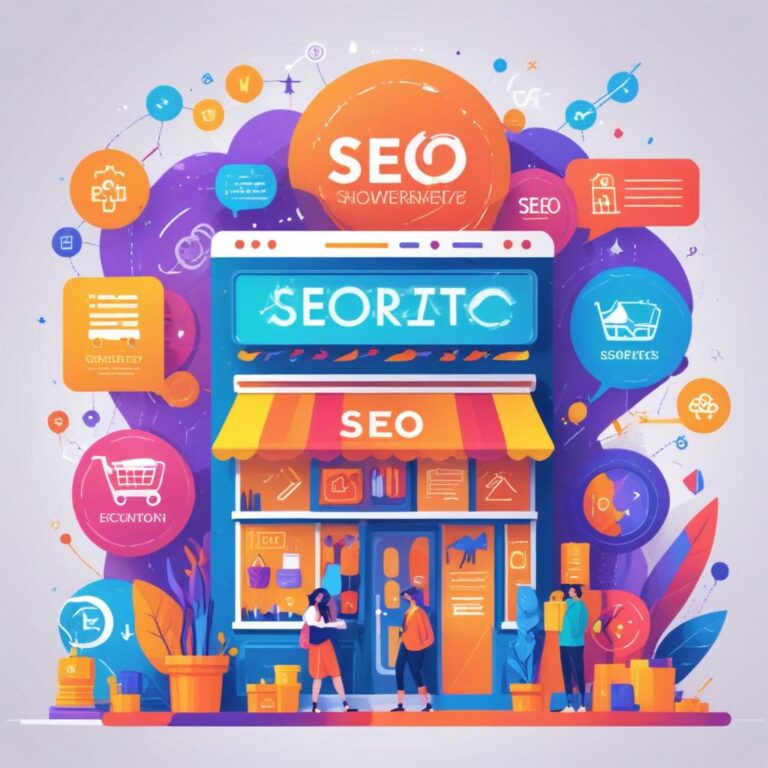From Keywords to Conversions: E-commerce SEO Enhancements That Drive Sales

Image by rawpixel.com on Freepik
The E-commerce Landscape: An SEO Odyssey
In the vast sea of online commerce, imagine setting sail without a map. Navigating the waters of e-commerce without effective SEO is strikingly similar. As the digital marketplace flourishes, the competition intensifies, and the challenge of standing out becomes more daunting. Enter Algoboost.io—a beacon of hope for e-commerce brands grappling with the intricacies of search engine optimization.
As you embark on this journey of enhancement, it’s essential to understand that SEO is not just a one-time fix. It demands a strategic approach, constant updates, and an intimate connection with your audience.
Let’s unravel the essentials of e-commerce SEO, explore common challenges, and discover how Algoboost.io can turn these challenges into opportunities for growth.
Understanding the Treasure Map: Keyword Research
Imagine you’re searching for buried treasure. What’s the first step? You need a map. In the world of SEO, keywords are that map, guiding you to your audience’s hidden desires.
1. **Identifying Keywords**: Start by brainstorming relevant terms that reflect your products and industry.
2. **Using Tools**: Leverage tools like Google Keyword Planner, Ahrefs, or Algoboost.io to discover search volume and competition levels.
3. **Long-Tail Keywords**: Don’t overlook long-tail keywords. These typically have lower competition and can lead to higher conversion rates. For instance, instead of targeting “shoes,” consider “best running shoes for flat feet.”
Algoboost.io takes the guesswork out of keyword research. Their advanced algorithms analyze market trends and competitor strategies, providing you with a list of high-potential keywords tailored to your niche.
The Power of Intent
Understanding the intent behind a search is crucial. Are users looking for information, ready to make a purchase, or exploring options? Aligning your keywords with user intent can drastically improve your click-through rate (CTR) and conversions.
– **Informational Intent**: Focus on keywords that provide answers (e.g., “how to choose running shoes”).
– **Navigational Intent**: Brands can capitalize on queries using brand names (e.g., “Nike running shoes”).
– **Transactional Intent**: Capture sales-ready customers with specific phrases (e.g., “buy running shoes online”).
Remember, keywords are not just words; they are gateways to your audience’s needs and aspirations.
Crafting Content that Sells
With your treasure map (keywords) in hand, it’s time to dive into the heart of your e-commerce website: your content. Crafting engaging, informative, and persuasive content is paramount in drawing potential customers in.
1. **Product Descriptions**: Instead of just listing features, weave storytelling into your product descriptions. Describe how your product solves a problem or enhances a lifestyle.
– **Example**: Instead of “waterproof jacket,” use “stay dry and stylish on your adventure with our sleek, waterproof jacket designed for those who explore the outdoors.”
2. **Blog Posts**: Create informative blog content that addresses your audience’s interests and pain points. This not only helps with SEO but builds trust.
3. **User-Generated Content**: Encourage reviews and testimonials. Authentic content from your customers can provide social proof that boosts conversions.
Algoboost.io offers versatile content recommendations based on trending topics and user engagement data, enabling you to create content that resonates with your audience.
Optimizing for UX
A seamless user experience (UX) is fundamental to e-commerce success. SEO is intertwined with UX; if your site is difficult to navigate or slow to load, your audience will bounce away, leading to lost sales.
– **Mobile Responsiveness**: Ensure your e-commerce site is mobile-friendly. With a significant portion of online shopping done on mobile devices, a non-responsive site can hurt your rankings and sales.
– **Site Speed**: Utilize tools like Google PageSpeed Insights to analyze your site speed and implement necessary changes. Aim for loading times under three seconds.
– **Easy Navigation**: Create a straightforward navigation menu and use clear categories to help users find products effortlessly.
Algoboost.io can help you identify UX weaknesses and offer actionable insights to enhance user engagement, making sure each visitor is a step closer to conversion.

Secondary Image by freepik on Freepik
Link Building: Building Bridges for Authority
Just as bridges connect islands, backlinks connect your site to authority figures in your industry. Link building is a vital part of e-commerce SEO, enhancing your site’s authority and visibility.
1. **Guest Blogging**: Reach out to reputable websites in your niche for guest blogging opportunities. Include links to your site within relevant content to drive traffic back to your products.
2. **Influencer Collaborations**: Partner with influencers who can promote your products and link back to your site. This not only drives traffic but also builds credibility.
3. **Quality Over Quantity**: Focus on securing quality backlinks from respected sites rather than mass links from low-quality sources.
Algoboost.io simplifies link-building strategies by identifying high-quality linking opportunities and providing insights on how to establish those connections.
The Importance of Internal Linking
While external links are essential, don’t underestimate the power of internal linking. They guide users through your site, encourage exploration, and help search engines understand your site’s structure. Always link related products or blog posts to retain user attention and improve navigation.
Analytics: Measuring Success and Refining Tactics
Once your e-commerce SEO strategies are launched, the journey does not end. Monitoring performance through analytics is crucial to understanding what works and what needs refining.
1. **Traffic Sources**: Use Google Analytics to analyze where your traffic is coming from. Are visitors arriving through organic search, social media, or direct traffic?
2. **Conversion Tracking**: Set up goals to track conversions. This could be purchases, newsletter sign-ups, or downloads.
3. **Bounce Rates**: Monitor your bounce rates. High bounce rates can indicate issues with your content or user experience.
Algoboost.io provides comprehensive analytics features that help you track your SEO performance in real-time. This allows you to adapt your strategies quickly based on data-driven insights.
A/B Testing**
Implement A/B testing for product descriptions, CTAs, and landing pages. This process allows you to experiment with different elements to see what resonates best with your audience, further enhancing your conversion rates.
E-commerce SEO Beyond the Basics
As you master the foundational elements of e-commerce SEO, consider these broader insights to propel your strategy further:
1. **Structured Data**: Implement structured data (schema markup) to enhance search listings. This feature can result in rich snippets, improving visibility and click-through rates. For example, using schema for product reviews can display star ratings directly in search results.
2. **Local SEO**: If your e-commerce brand serves specific locations, consider optimizing for local search. This includes creating a Google My Business account, ensuring local keywords are included, and garnering local backlinks.
3. **Voice Search Optimization**: With the rise of voice-activated devices, optimizing for voice search can give you a competitive edge. Typically, voice searches are more conversational, so incorporate natural language and question-based keywords.
4. **Video Content**: Video marketing is booming. Consider integrating videos for product demonstrations or tutorials. This not only improves engagement but can lead to higher rankings in search results.
As you implement these advanced strategies, Algoboost.io’s innovative features make it easier to adapt to changes in the SEO landscape, keeping you ahead of the curve.
Conclusion: Your E-commerce SEO Companion
In the ever-evolving world of e-commerce, staying afloat requires more than just a great product—it demands a solid SEO foundation. From keyword research to content creation, user experience improvements, link building, and analytics, each step is crucial in the journey toward conversions.
Algoboost.io stands out as a comprehensive solution to tackle common SEO challenges. With its user-friendly interface and data-driven insights, it empowers e-commerce brands to enhance their visibility, engage their audience, and ultimately drive sales.
Are you ready to take your e-commerce SEO to the next level? Explore Algoboost.io today and embrace a future of search engine success!





